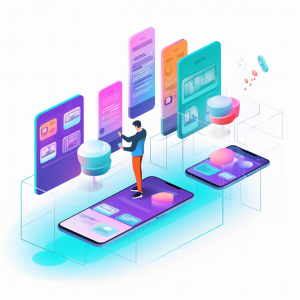
DreamzIoT’s product design prototype is a testament to innovation and functionality. Product Design and Prototyping are holistic approaches to building a new product, from start to finish. Definition of product design is quite vague as it can be widely described as the process of creating products that meet the user’s needs. It encompasses everything from doing market research, data analysis, identifying problems, product development, designing informed solutions, prototyping, and everything in between. It lays down the foundation upon which the business of the product depends. Prototyping is a critical phase in product design and development by crafting interactive experiences quickly and easily.
Designing a prototype for a product involves several steps to bring your concept to life. Here is a general guide to help you through the process:
Define Your Objectives:
- Clearly outline the purpose of your product.
- Identify the problem it solves or the need it fulfills.
Market Research:
- Understand your target audience and their preferences.
- Analyze competitors to identify unique selling points.
Conceptualization:
- Brainstorm and sketch out various design ideas.
- Consider functionality, aesthetics, and user experience.
Create a Design Brief:
- Summarize the key features and goals of your product.
- Include any technical specifications and constraints.
Sketching and Wireframing:
- Develop rough sketches or digital wireframes.
- Focus on the overall layout and basic functionality.
Digital Prototyping:
- Use design software like Sketch, Figma, or Adobe XD.
- Develop a more detailed interactive prototype.
- Include different screens and user interactions.
3D Modeling (if applicable):
- For physical products, create a 3D model.
- Tools like Autodesk Fusion 360 or SolidWorks can be helpful.
Material Selection:
- If your product involves physical components, choose appropriate materials.
- Consider factors like durability, cost, and aesthetics.
Iterate and Refine:
- Gather feedback from potential users or stakeholders.
- Make necessary adjustments to improve the design.
Build a Physical Prototype:
- If applicable, create a physical model using materials like foam, cardboard, or 3D printing.
- Test the physical aspects of your design.
Functional Testing:
- Ensure that your prototype functions as intended.
- Identify and address any technical issues.
User Testing:
- Conduct usability tests with potential users.
- Gather feedback on the user experience and make improvements.
Finalize Design:
- Make any final adjustments based on user feedback.
- Ensure the design aligns with manufacturing capabilities and cost constraints.
Prepare Documentation:
- Create detailed documentation for manufacturers, including drawings and specifications.
Manufacturing Considerations:
- Work with manufacturers to address any production challenges.
- Ensure the design is suitable for mass production.
Cost Analysis:
- Evaluate the cost of materials, manufacturing, and assembly.
- Ensure the final product is economically viable.
Create a Presentable Prototype:
- Develop a polished and visually appealing prototype.
- Use high-quality materials for a professional look.
Presentation:
- Showcase your prototype to potential investors, stakeholders, or customers.
- Highlight key features and benefits.
Feedback and Refinement:
- Gather additional feedback from presentations.
- Refine the design based on any new insights.
Finalize Prototype for Production:
- Make any last-minute adjustments.
- Prepare the prototype for mass production.





